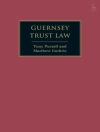This book brings together empirical and theoretical case-study research on art and heritage crime. Drawn from a diverse group of researchers and professionals, the work presented explores contemporary conceptualisations of art crime within broader contexts. In this volume, we see ‘art’ in its usual forms for art crime scholarship: in paintings and antiquities. However, we also see art in fossils and in violins, chairs and jewellery, holes in the ground and even in the institutions meant to protect any, or all, of the above. And where there is art, there is crime. Chapters in this volume, alternatively, zoom in on specific objects, on specific locations, and on specific institutions, considering how each interact with the various conceptions of crime that exist in those contexts. This volume challenges the boundaries of what we understand as “art and heritage crimes” and displays that both art, and criminality related to art, is creative and unpredictable.
Table of Content
Introduction.- Assay-ssination: Reflections on the Cost of Jewellery and Gem Crime.- Design crime in context: Mass-manufactured design, design-as-art, and Chandigarh’s modernist furniture.- The Evolution of the Belgian Art and Antiques Unit.- Fossil trafficking, fraud, and fakery.- Illicit Excavations and Trade in Antiquities.- New Security Challenges at Museums and Historic Sites: The Case of Spain.- Revisiting the Looting of Site Q through Lidar: A Case Study of Illicit Digging in La Corona, Guatemala.- Securing Borders and Restraining the Illegal Movement of Cultural Property to, from, and within, the Island of Ireland.- Stealing Heritage in Canada.- The Theft of Your Soulmate: Motivations for the Theft of Rare Violins.- UNESCO Emergency Response “First-Aid” Heritage Interventions in Syria during Armed Conflict.- Yellow Journalism: Neutralisation techniques, media validation, and the Rothko vandal.
About the author
Dr Naomi Oosterman is a permanent lecturer at the Department of Arts and Culture Studies and an affiliated researcher at Heritage under Threat Opens external; part of the LDE Centre for Global Heritage and Development.
Naomi finished her Ph D dissertation titled Policing the art world: Contradictions in international and national perspectives in 2019. Her research specialisations and interests are the policing of art and heritage crime, sociology of deviance, risk, and the illicit trafficking of arts and antiques. She has published on these topics in peer-reviewed academic journals and edited volumes, as well as non-academic sources.
Dr Donna Yates is an Associate Professor in the department of Criminal Law and Criminology at Maastricht University. Her research is focused on the transnational illicit trade in cultural objects, art and heritage crime, and white collar crime.
Yates has recently been awardeda €1.5 million European Research Council starting grant to study how objects influence criminal networks, with a particular focus on objects such as antiquities, fossils, and rare and collectible wildlife. She’s interested in what draws people to these “criminogenic collectibles”, how they interact with them, and how these objects may inspire crimes.












